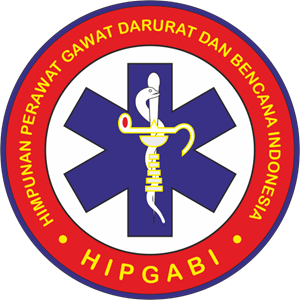Self-Efficacy of Instrument Nurse during the Assignment of Earthquake Disaster in Nusa Tenggara Barat (NTB)
Downloads
Introduction: Nurse is the spearhead of hospital services at disaster, which is also links to the Integrated Emergency Response System (SPGDT). This study aims to describe self efficacy of instrument nurse during the assignment period. Method: The study used a qualitative design with descriptive phenomenology approach. The study population was instrument nurse assigned to the earthquake in West Nusa Tenggara (NTB), the study sample was obtained by snowball sampling, participants were 16 instrument nurse. Method of collecting data using in-depth interview. Data collection tools used are voice recorder, interview guideline, and field note. Data is processed by thematic analysis according to Colaizzi. Results: Nurses' self efficacy can be seen from a positive assessment of their capabilities as evidenced by expressing understanding, forming a team, and establishing an emergency response team. In addition, nurse have high motivation to do assignments, and nurse show a positive attitude when appointed to work in NTB. Discussion: Knowledge, attitudes, and motivation of nurses, will be build a nurse self efficacy. Nurses who have high self efficacy, are confident in their abilities in carrying out their duties, will be able to carry out their duties well despite the demands and high workload.
Bandura, Albert. (1977) ‘Social Learning Theory', Prentice Hall, Inc : Englewood Cliffs New Jersey
Abdul, E. L. S. (2016) ‘Hubungan Perilaku Caring Perawat dengan Tingkat Kepuasan Pasien Rawat Inap Rumah Sakit', Program Studi Ilmu Keperawatan Universitas Hasanuddin, (65).
Dan, X. et al. (2018) ‘Innovative behaviour and career success: Mediating roles of self-efficacy and colleague solidarity of nurses', International Journal of Nursing Sciences. Elsevier, 5(3), pp. 275–280. doi: 10.1016/J.IJNSS.2018.07.003.
Fang, W. et al. (2018) ‘Relationships between optimism, educational environment, career adaptability and career motivation in nursing undergraduates: A cross-sectional study', Nurse Education Today.
Churchill Livingstone, 68, pp. 33–39. doi: 10.1016/J.NEDT.2018.05.025.
Marshall, A. J., Schultz, T. and de Crespigny, C. F. (2018) ‘Emergency clinicians' perceived self-efficacy in the care of intoxicated women victims of violence', International Emergency Nursing. Elsevier, 40, pp. 18–22. doi: 10.1016/J.IENJ.2018.03.001.
Mitchell, B. G. et al. (2018) ‘Changes in knowledge and attitudes of hospital environmental services staff: The Researching Effective Approaches to Cleaning in Hospitals (REACH) study', American Journal of Infection Control. Mosby, 46(9), pp. 980–985. doi: 10.1016/J.AJIC.2018.02.003.
Pratomo, R. A. and Rudiarto, I. (2013) ‘Permodelan Tsunami dan Implikasinya Terhadap Mitigasi Bencana di Kota Palu', Jurnal Pembangunan Wilayah & Kota, 9(2), p. 174. doi: 10.14710/pwk.v9i2.6534.
Spain, K. M. et al. (2012) ‘When Disaster Happens: Emergency Preparedness for Nurse Practitioners', The Journal for Nurse Practitioners. Elsevier, 8(1), pp. 38–44. doi: 10.1016/J.NURPRA.2011.07.024.
1. The journal allows the author to hold the copyright of the article without restrictions.
2. The journal allows the author(s) to retain publishing rights without restrictions.
3. The legal formal aspect of journal publication accessibility refers to Creative Commons Attribution (CC BY).

















